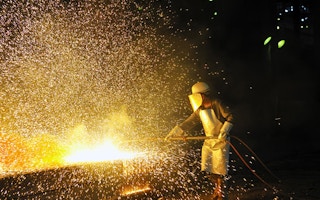Research commissioned by ABB has confirmed that energy efficiency remains a high priority for executives in the industry. Of the more than 300 surveyed in the manufacturing and power sectors by the Economist Intelligence Unit (EIU), almost all said energy efficiency will remain a critical success factor for their companies in the next two decades. But three quarters of those same executives said they faced barriers to improving energy efficiency and data from the EIU report further indicated that these barriers are affecting more companies.
To continue reading, subscribe to Eco‑Business.
There's something for everyone. We offer a range of subscription plans.
- Access our stories and receive our Insights Weekly newsletter with the free EB Member plan.
- Unlock unlimited access to our content and archive with EB Circle.
- Publish your content with EB Premium.
This is a problem for reasons of industrial competitiveness – energy costs are high and rising – and environmental impact. It may not be exciting or glamorous but reducing the amount of energy consumed for the same or a greater amount of output is unquestionably the most sustainable approach of all.
So how much room is there for industrial companies to improve energy efficiency?
The first thing to note is that significant progress has been made over the past 20 years in the most energy-intensive industries. Many producers in the steel industry, which is the main industrial energy consumer, have dramatically reduced consumption by switching from blast furnaces to the electric process, which uses only half the energy. However, among producers which use the electric process, there are wide national and regional variations (consumption in China, Russia, Ukraine and Brazil are 1.5 to 2 times higher than in Japan, for instance). The potential for further energy savings is estimated at around 40 per cent or 250 million tonnes of oil equivalent (Mtoe), which is equivalent to the energy consumption of France or Brazil.
“
The three main barriers to investments in energy efficiency are the lack of a clear-cut financial case, a lack of funds for large infrastructure investments and the lack of actionable information about energy efficiency options
Similar considerations apply in the cement industry, the third-largest industrial energy consumer. If the main producing countries were to have the same energy efficiency as the world’s best performers (Mexico, Germany and the US), the energy consumption of the whole industry would drop by 20 per cent or 50 Mtoe.
According to the EIU survey, the three main barriers to investments in energy efficiency are the lack of a clear-cut financial case, a lack of funds for large infrastructure investments and the lack of actionable information about energy efficiency options.
Of the firms surveyed, 28 per cent said that in times of tight resources, companies had to choose between allocating capital to measures that would save money and those that would provide growth opportunities. This suggests that many firms do not fully understand that being more efficient can lead to competitive advantage, which in turn leads to profitable growth.
The survey also showed that while information about the benefits of investments in energy efficiency had improved, 71 per cent of companies said that “industries need clearer benchmarks for what constitutes energy efficiency” in their sectors. Some of those who have invested used internal benchmarks, comparing plants of different ages, to gauge the value of investments.
It’s difficult to make the right decisions concerning resource efficiency if there is no agreement on benchmarks and companies are afraid of missing out on growth opportunities. From these findings, I would say it’s clear that we in the industry need to make a greater effort to raise awareness of the opportunities offered by energy efficiency. We also need to continue investing in technology, and we need to work with politicians to make sure that we have a regulatory environment that strives for predictability and clarity in energy efficiency.
Ulrich Spiesshofer is the chief executive officer of ABB. The findings referred to in this article can be found in “Trends in global energy efficiency”, which comprises a white paper by the Economist Intelligence Unit (EIU) based on a survey of 317 senior industry executives, and research by Enerdata.

















